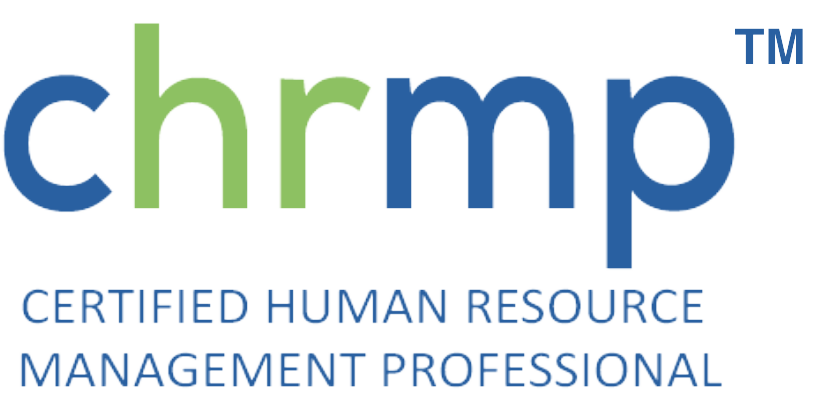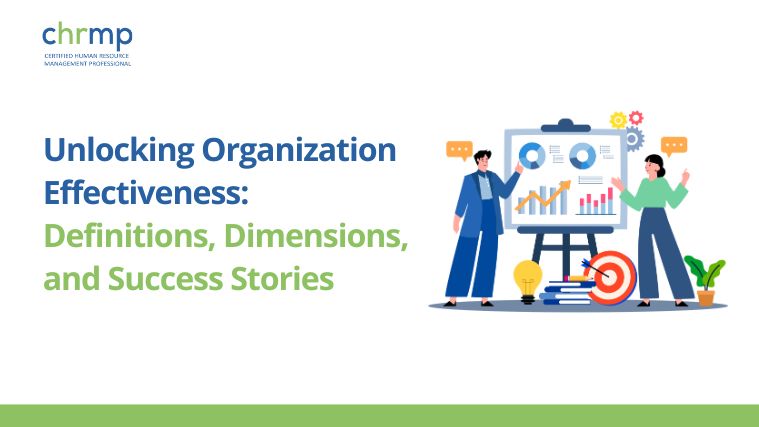HR Metrics is proving to be a boon to the organizations. Hence, how to get started for it in any organization is a matter of great significance. For having a better understanding of this blog, please go through the following blog, which we have published earlier.
HR Metrics :Meaning And Importance
1.0 Why do you need HR Metrics system in your organization?
The author furnishes below some credible reasons, as to why do you need to have an adequately designed HR Metrics system in your organization.
1.1 Avoid getting caught off guard with respect to new emerging necessities of your organization
HR Metrics helps us to understand what is currently happening , and what we are required to do in future, to keep the business afloat. Strengthening the potentially good aspects and mitigating the weak spots, is the key to continuous improvement in any business. It helps us in this mission.
1.2 Choosing right people and future leaders
Predictive analysis helps us in choosing the right people and also identifying the future leaders.
1.3 Improving retention
HR Metrics will help in understanding why some employees leave and why others prefer to stay back.
1.4 A dominant HR division influencing the business goals of the organizations
HR Metrics may help human resource professionals to play a dominant role in influencing the business of the organization. They may accomplish it by the following.
- Conveying the reasons for the turnover rate of the employees in the organization
- Coming up with new ways to improve Return on Investment on employees
1.5 Helping top management in making better decisions
HR Metrics may help top management by providing better insights of business. This in turn, may aid in making better decisions.
2.0 Features of a good HR Metrics system
A good hr metrics system should have the following features:
- It should be capable of visual presentation of huge amount of HR data. Hence, it must have an advanced visualization software attached to the analytics system
- There should be provision for four kinds of Analytics, viz., Descriptive, Diagnostic, Predictive and Prescriptive, in the system. However, it is the opinion of the author that having predictive analytics is the most important.
- It should also include machine Learning technology and a robust tool for statistical analysis.
- The system should be easily understandable by the common employee
- It should help in meeting business needs of the organization, for which we are planning to procure it.
3.0 Three questions you should ask to yourself, before choosing or considering HR Metrics for your organization
You must ask following three questions to yourself, before considering or choosing HR Metrics for your organization.
- Why do you want HR Metrics ?
- What do you want in HR Metrics ?
- How do you want to implement HR Metrics ?
An answer to these three questions may help you to assess the hr metrics capabilities of your organization.
3.1 Why do you want HR Metrics?
If you have an organization with a large number of employees, it may be difficult to handle big HR data. In that case, HR Metrics may help you in data-drive decisions to attract, manage and retain employees, which includes improving the Return On Investment. With conventional methods of data analysis, this is difficult to achieve. For small and medium sized organizations also, HR Metrics is equally useful. Some of the ways by which it may help them are as follows:
- Measurement of effectiveness of their learning & development programs-Identification of trends in their workplace and migration of employees
- Improving business strategies through optimizing recruitment methodology, employee turnover and retention
- Boosting the experience of employees.
3.2 What do you want in HR Metrics ?
The answer to this question will define the specific requirements of your organization for HR Metrics. We must bear it in mind that HR Metrics, which focuses on assessing only HR functions through score-cards have only a moderate impact on business outcomes. However, predictive and prescriptive analytical tools help immensely as they focus on results.
3.3 How do you want to implement HR Metrics?
Answer to this question, conveys about the strategy you should adopt to make it happen in your organization. The following important pointers may come to your rescue:
- Information-rich decisions may help you in a better way than information-poor decisions. Hence, try to gather and cleanse data as much as possible
- Appropriate selection of technology for HR Metrics, so that it is able to turn information into actionable insights.
4.0 How to get started with HR Metrics in your organization?
Author suggests the following eight steps to initiate the process of hr metrics in your organization.
4.1 Familiarize yourself with HR Metrics and try to know what is what.
This may consist of the following:
- Reading books, papers and journals on HR Metrics
- Networking with experts
- Searching for vendors and start interacting with them
4.2 Digitization of data of HR department and also the organization’s data
Digital transformation of HR functions and also the entire organization, is the first pre-requisite, before we start the process of HR Metrics.
4.3 Clearance from the legal department regarding handling of data
We should also try to ensure, that we adequately address data privacy and security. Also, we should not violate the relevant laws prevalent in the region .
4.4 Hold a HR Metrics seminar before its implementation
We may conduct a seminar among the employees and also HR professionals, within the company, to stress the need for implementing an HR Metrics system. This, we may do, with a view to achieve the following:
- Creating an awareness among the workforce about the different facets of the new system
- The above step may increase the buy-in for the project from the employees
- We may also seek the the opinion of employees and incorporate it into the execution of the project-Such a meeting may also highlight possible red flags or potential obstacles to the implementation of the project
4.5 Freeze the requirements of the organization after identifying the business needs
In order to do this, tips given in section 2, 3 and 4 of this blog, may prove to be beneficial.
4.6 Build the capability and arrange for training
Based on the above, the necessary HR Metrics technologies and software, we may try to procure. We may also arrange for the required training of the personnel.
4.7 Put the HR Metrics into practice
The best proposition will be, to give it a 100 days trial, to identify the strengths and weaknesses of the system. We may incorporate necessary corrections, if any after getting the feedback of a 100 days trial.
4.8 Continue to improve the system
Continuous monitoring of the system at different levels to improve the processes is a desirable step.
hr metrics is proving to be a boon to the organizations. Hence, how to get started for it in any organization is a matter of great significance.
actionable insights from data and analytics can help you make better decisions on hiring, training, performance management, compensation etc.
HR Analytics is a term used to describe the use of data and analytics in Human Resources functions. It includes all aspects of human resource activities such as recruitment, selection, employee engagement, retention, performance management, benefits administration, payroll, compensation, succession planning, talent acquisition, training, development, learning and organizational culture.
The predictive analysis is an analytical technique that uses statistical methods to predict future outcomes or events based on past observations. Predictive analytics are used to identify patterns in historical data to determine what will happen in the future.
Predictive analytics are used to forecast demand, sales, customer satisfaction, product usage, stock levels, weather, traffic, crime rates, and other types of events.
people analytics can also be defined as “the process of extracting information about people from their interactions with various systems”.
People analytics is a subset of business intelligence which encompasses the collection, storage, retrieval, and presentation of data related to the entire life cycle of a person within an organization. People analytics focuses primarily on understanding the individual behavior of employees and customers.
It provides actionable insights into the workforce and helps companies improve processes, reduce costs, and increase productivity.
talent analytics is the application of advanced analytics techniques to the problem of matching skills with job requirements. The goal is to find the best match between skill set and job requirement.
In general, talent analytics is the practice of using data mining and machine learning algorithms to discover trends and patterns in large sets of data.
A key component of talent analytics is the ability to extract meaningful information from unstructured data sources such as resumes, social media profiles, video interviews, and online portfolios.
Human Resource is a critical function of any organisation. It has a significant impact on the success of an enterprise.
The employee experience can be evaluated and judged with the help of analytics tools. These tools can provide valuable insights into the effectiveness of your current recruitment strategies and help you design new ones.
Analytics can help you understand why some candidates were successful while others weren’t. This would enable you to focus more on the right attributes that are required for each position.
Analysing the candidate’s resume and interview answers can give you a clear picture of his/her strengths and weaknesses. You can then decide whether he/she should be hired or not.
business performance management is the systematic measurement and evaluation of business performance by collecting, analyzing and interpreting data about the company’s operations, products, services, markets, competitors and stakeholders.
Business Performance Management is a strategic tool that enables organizations to make informed decisions and take actions that drive growth and profitability.
Business Performance Management is the process of measuring, monitoring, reporting, evaluating and improving the performance of an organization.
Business Performance Management consists of three main components:
business strategy, operational planning and control, and performance management.
These three components are interrelated and mutually reinforcing. They form a complete system for managing organizational resources effectively.
This section will discuss how Business Performance Management works.
Business Strategy:
Business strategy is the plan for achieving future goals and objectives. It includes the formulation of corporate vision, mission, values, and purpose.
Operational Planning & Control:
Operational planning and control is the process of allocating resources efficiently so that they are used most effectively.
Performance Management:
Performance management is the process of measuring and evaluating the results of activities against predetermined standards.
Business Performance Management:
Business Performance Management is an umbrella term covering the following four areas:
- Strategic Planning
- Operational Planning & Control
- Performance Measurement & Evaluation
- Improvement & Process Re-engineering
business leaders tend to ignore the importance of human resource analytics because it requires time and effort. However, this investment pays off in the long run. The benefits include increased productivity, reduced costs, improved customer service, and better employee engagement.
In order to reap these rewards, however, HR professionals need to have access to the right set of tools.
A data-driven approach can solve many conflicts by providing objective information. For example, if there is a dispute between two employees over who has been assigned a particular task, using analytics can help resolve the issue objectively.
It also helps companies identify their top performers and underperformers.
HR Analytics tools can help you get a 360 degree view of your organisation.
They can tell you which departments are performing well and which ones require improvement.
You can use them to measure the success of your recruitment efforts. Key HR metrics such as turnover, attrition, salary, promotion rates, etc., can be calculated easily.
The best part? You don’t even have to hire any additional staff!
With the right analytical tools at hand, you can start making smarter decisions today.
Let us now look at some of the key features of HR Analytics tools.
Key Features of HR Analytics Tools
There are several types of HR Analytics tools available on the market.
The hiring process is one area where HR Analytics tools come into play.
For instance, when you are looking to fill a new position, you can use HR Analytics tools to find the right candidate.
Analytics can help you understand why certain candidates were not selected.
This way, you can improve your selection criteria or re-evaluate your job description.
Another important feature of HR Analytics tools is that they provide insights about your workforce.
Business questions that need answers:
What are some of the trends in HR Analytics?
- Businesses are increasingly turning to HR Analytics tools to make better business decisions.
- HR professionals are becoming more involved with technology.
What are the best practices in Using HR Analytics?
- Use analytics to improve performance.
- Ensure that your organization’s processes are aligned with the company strategy.
- Make sure that your leadership team understands how analytics will impact their jobs.
- Don’t rely solely on data for decision making.
- Ensure that you have adequate resources to support data analysis.
- Be open minded about what data can do for you.
- Understand that data collection takes time and money.
- Keep up to date with industry developments.
What should an organization do to start using HR Analytics?
- Implement a culture of sharing data.
- Start collecting data from all departments within your organization.
- Create a dashboard to track progress.
- Integrate analytics into your existing systems.
- Build a strong relationship with your IT department.
- Hire a dedicated analyst.
- Choose the right tool for your needs.
- Set realistic expectations.
Why Is HR Analytics Important?
Data is growing exponentially.
In fact, it is doubling every year.That means the amount of data collected is increasing too. And this growth is expected to increase further in coming years. But most organisations are struggling to keep pace with the deluge of data. And without proper management, this data could end up being useless.
So, it makes sense to implement an effective solution like HR Analytics.
What are the challenges faced by organisations when they want to implement HR Analytics?
- Data storage issues.
- Lack of expertise.
- The cost of implementation.
- Time constraints.
what kind of skills will be required to work in this field?
- Skills include problem solving, communication, critical thinking, creativity, and teamwork.
- You’ll also need good computer skills, including proficiency in Microsoft Office programs.
- Some employers prefer applicants who have experience working with databases.
- Good interpersonal skills can help you develop relationships with clients.
- How to get started with HR Analytics?
- What are the best practices in using HR Analytics?
How to get started with HR analytics?
- Analytic tools enable businesses to collect and analyze data.
- They can then use these insights to improve operations.
what is the role of HR Data Scientists?
- A data scientist uses statistical methods to extract useful information from large sets of data.
- He or she works closely with other members of the business to interpret its findings.
- In addition, he or she may design new models to predict future outcomes.
- Data scientists must be able to communicate effectively with colleagues across different teams.
- They must also be creative thinkers.
- Most importantly, they must possess excellent analytical skills.
what are the key components of HR Analytics?
- Collecting and analyzing data.
- Interpreting results.
- Communicating with stakeholders.
- Making recommendations.
- Creating dashboards.
- Developing reports.
- Using predictive modelling techniques.
- Planning for the future.
- Maintaining confidentiality.
- Monitoring compliance.
- Ensuring security.
- Keeping records.
- Evaluating performance.
- Identifying trends.
- Understanding market dynamics.
- Improving processes.
If you are looking to upgrade your skills in HR Metrics, you might want to consider the certification in HR Metrics by CHRMP. To learn more click here.






